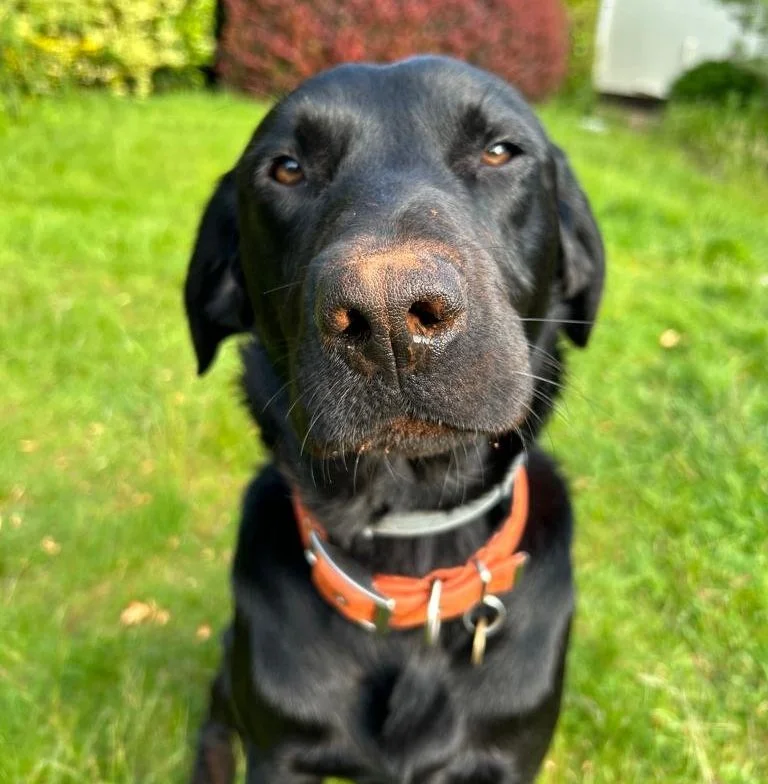A dog friendly garden (with Dig and Doug)
You love your garden and you love your dog, but does your garden work for both you and your four-legged friend? That question may depend on quite how much your dog likes to dig/eat plants/search for escape routes, but we’ve got some suggestions to help make your garden a fun and stress-free place for you both!
Suzy’s lovely labradors Dig(by) and Doug(las) enjoying a frosty morning in the garden
Pick robust plants
This is dog dependent – if your dog is content just having a little run around the lawn then you won’t need to worry too much, but if they dive headlong into the borders every time they get outside, then you’ll need to pick plants that can take it, like lavender and viburnums. You’ll probably also want to start of with plants that are a bit bigger – a perennial in a 2L pot is less likely to be terminally damaged than a small 9cm pot version if it gets trodden on.
Create dog-safe routes through the garden
Plants can only be so robust and they will get damaged if they are crashed into every day. Design routes through the garden for your dog so that they naturally avoid the planting you’re trying to protect. Raised beds, low hedging and screens can all be attractive garden features that steer dogs to take certain paths and avoid cutting straight through areas you want them to avoid.
Create areas for digging and playing
If your dog loves to dig, then you could try giving them a designated space, either an area of bare soil or a sand pit and try to encourage them to use this instead of unearthing your flowers. You can also create an area with toys and a water bowl that you designate for playing with your dog, rewarding them when they spend time there.
Doug caught red-nosed having a dig in an (un-designated area of) the garden
Avoid toxic plants
When it comes to toxicity the importance of avoiding these plants may depend on how likely you think your dog is to start snacking on your flora – if you are worried about this then check each plant before you include it in the garden. Some common plants to be aware of are foxgloves (Digitalis), daffodil bulbs (Narcissus) and yew (Taxus).
Fix those holes in the fence
To avoid a Great Escape moment make sure the perimeter of you garden is secure – if you have hedges that can be wriggled through, you might need to add a wire fence, and larger dogs may need higher fences.
Plan in some shade
On warm sunny days your dog will appreciate having somewhere cool to relax. Including trees and large shrubs can help create shade, plus give some great vertical structure to your garden.


